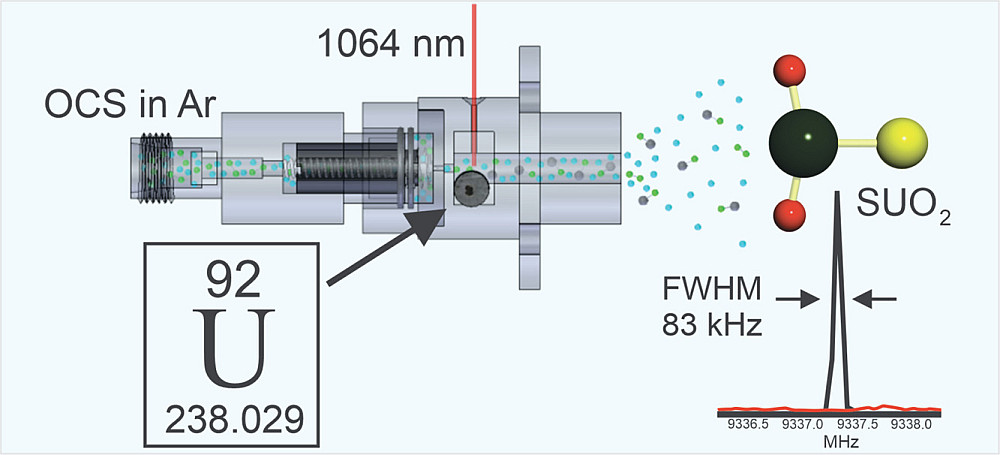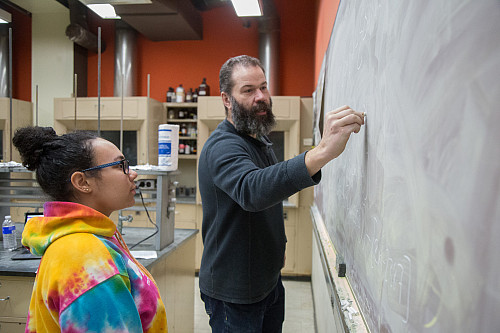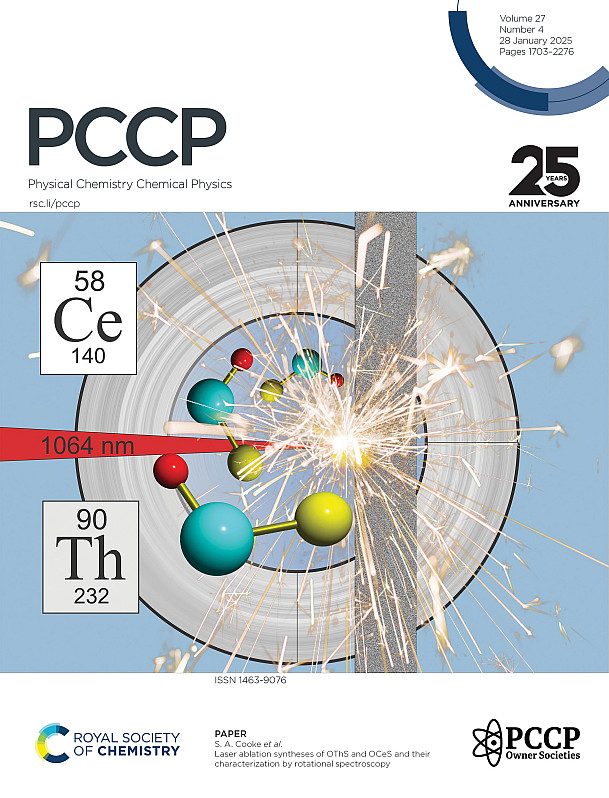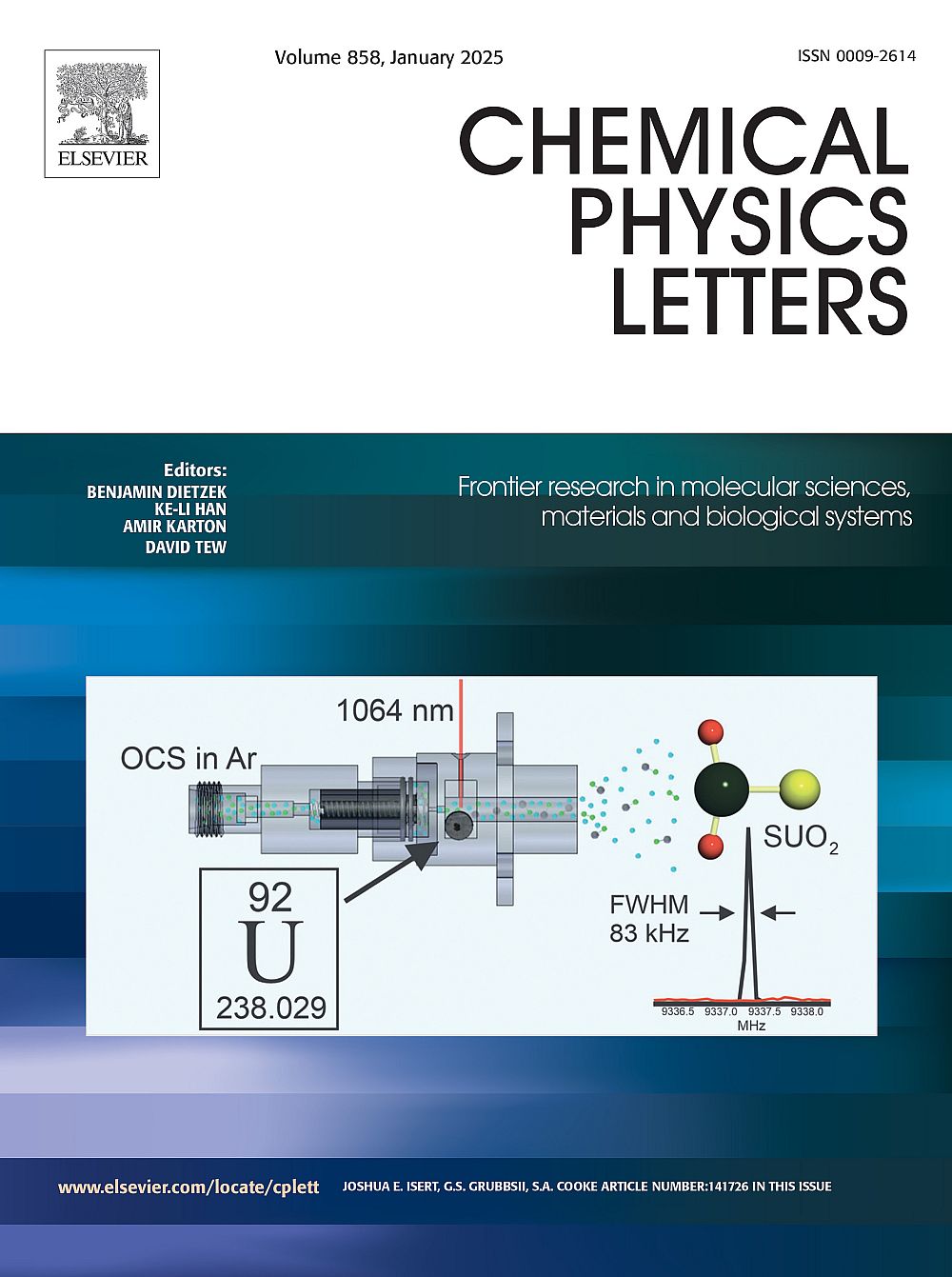Professor Stephen Cooke Creates New Chemistry and the Illustrations to Explain It
Cooke’s research and artwork featured on covers of prestigious chemistry journals.
Two major scholarly journals published work by Professor of Chemistry Stephen Cooke—not only his scientific research but the illustrations he created to accompany it.
Chemical Physics Letters (CPL) and Physical Chemistry Chemical Physics (PCCP) featured his work on the cover and inside cover, respectively.
Cooke’s research, funded by a U.S. Department of Energy grant, explores the fundamental chemical bonding of uranium, thorium, and cerium by using high-powered laser pulses to synthesize small, metal-containing molecules. (Read more about the grant.)
“My collaborators and I don’t perform chemistry in traditional glassware. Instead, we fire laser pulses at metal surfaces in attempts to initiate new chemistry.”
They fire lasers at the surfaces of constantly rotating metal rods, then observe the new molecules in a large metal chamber, the size of an oil barrel, held under vacuum.
“It’s totally appropriate to think ‘Star Wars,’ pew-pew!” Cooke says of his team’s unique approach, which produced surprising results. The molecules formed far more easily than expected, demonstrating the efficiency of this laser-assisted methodology.
Understanding these fundamental bonds has implications for reducing nuclear waste, a key focus of the DOE grant in the ongoing effort to move away from fossil fuels.
Cooke leans into visually explaining his work by creating his own scientific animations and illustrations. “I like thinking about the laser pulses striking the metal and have tried to represent how violent, but productive, the process is,” he explains. “It makes explanations of why the work is cool (in my opinion) and useful much, much easier.”
And it potentially broadens the audience. “The journals are smart to make researchers create a graphical abstract. I think it forces scientists to communicate their work in a different medium that might draw new readers in,” he explains.
Cooke’s work exemplifies the merging of creativity and innovation so prevalent at Purchase.




